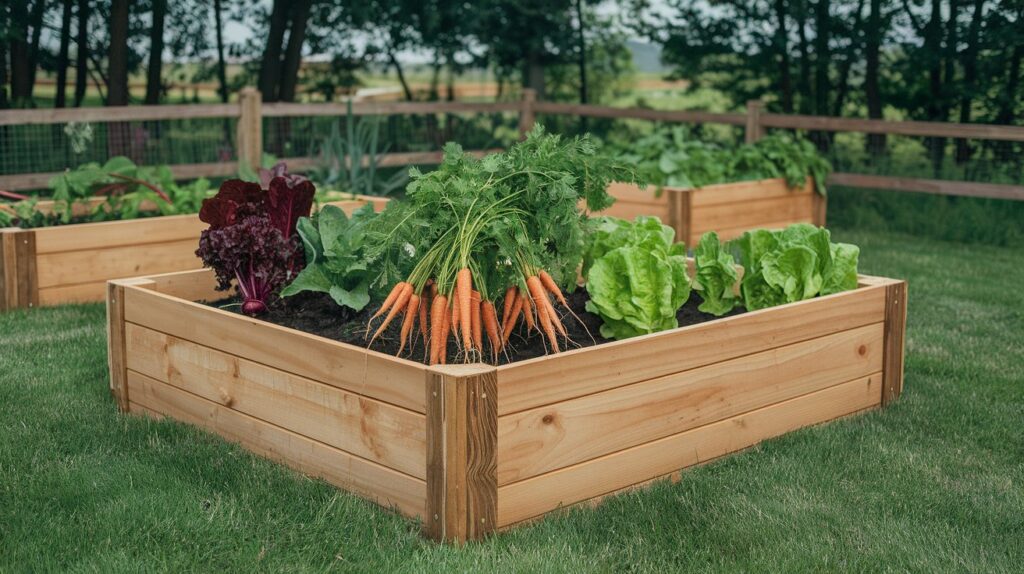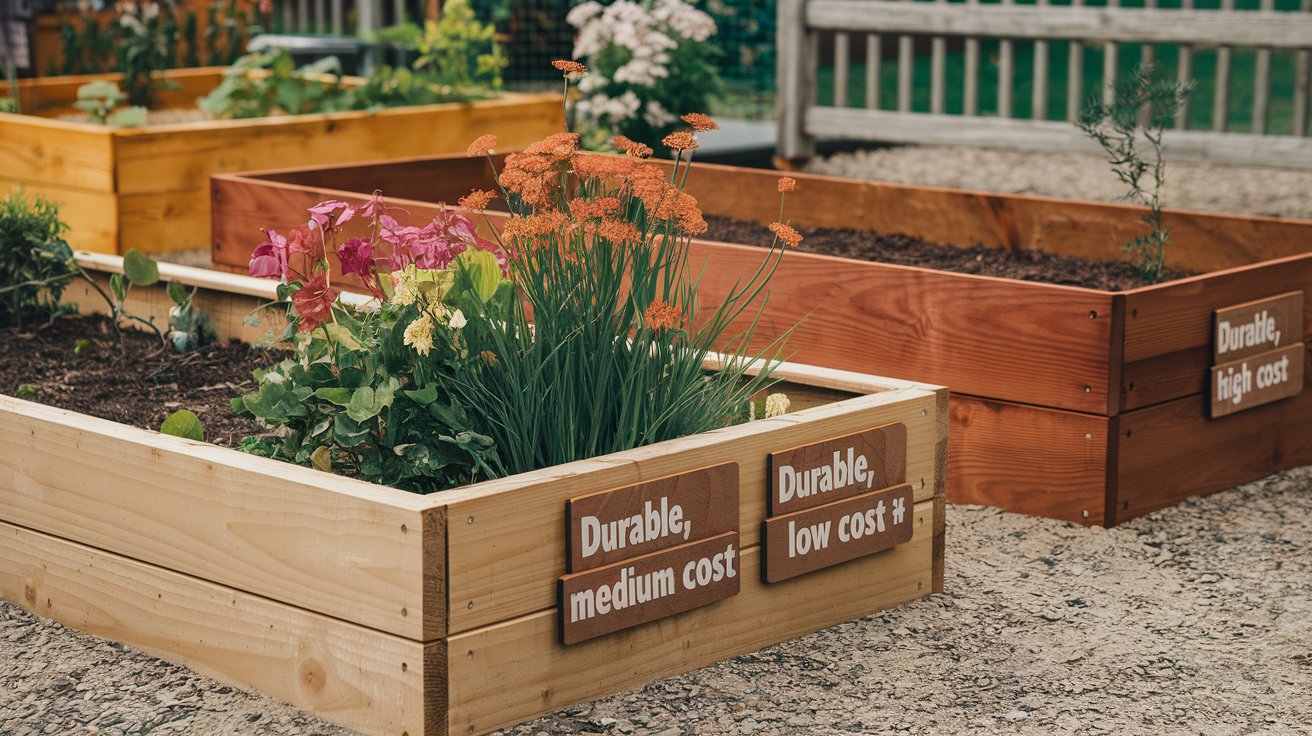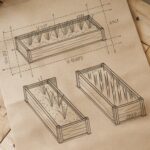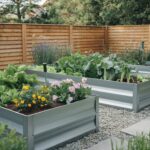When it comes to building a raised garden bed, selecting the right wood is crucial. The wood you choose will determine not only the longevity of your garden bed but also how well it protects your plants from harmful chemicals and weather damage. In this guide, we’ll explore the best wood options for raised garden beds, discuss how to balance durability with affordability, and provide insights into maintenance tips that will keep your garden thriving for years.
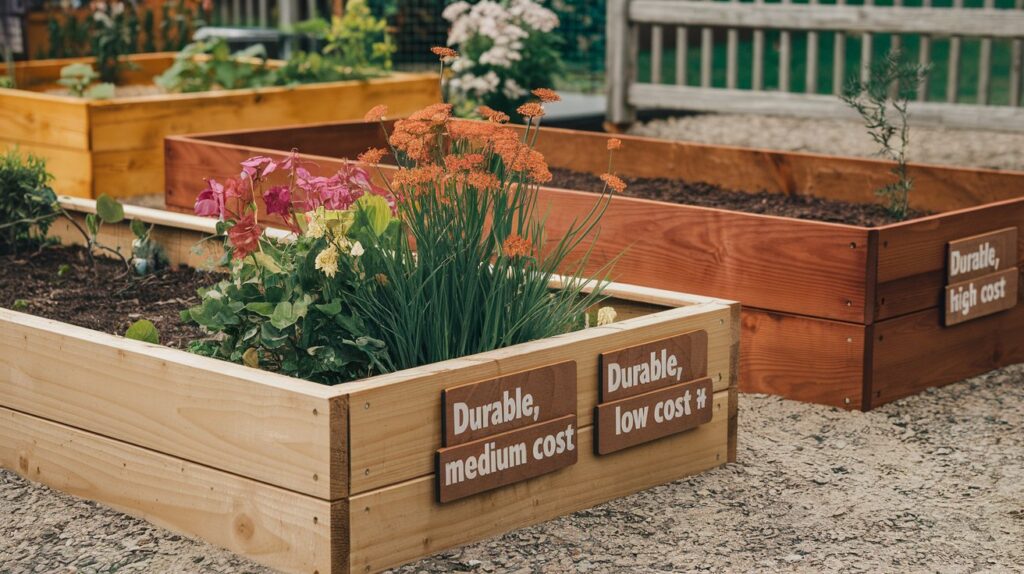
Table of Contents
1. The Importance of Choosing the Right Wood
Wood is a popular choice for raised garden beds because it’s easy to work with, widely available, and blends beautifully into most garden settings. However, not all wood is created equal. The type of wood you select for your raised bed can significantly affect how long it lasts, how well it resists pests and rot, and whether it might introduce any chemicals into the soil.
Things to Consider When Choosing Wood:
- Durability: You want a wood that will resist rotting and pests, especially since the bed will be in constant contact with moist soil.
- Cost: While hardwoods are more durable, they tend to be more expensive. Balancing cost and longevity is key to staying within budget.
Safety: Avoid using treated wood, as it may contain chemicals that could leach into the soil and potentially harm your plants.
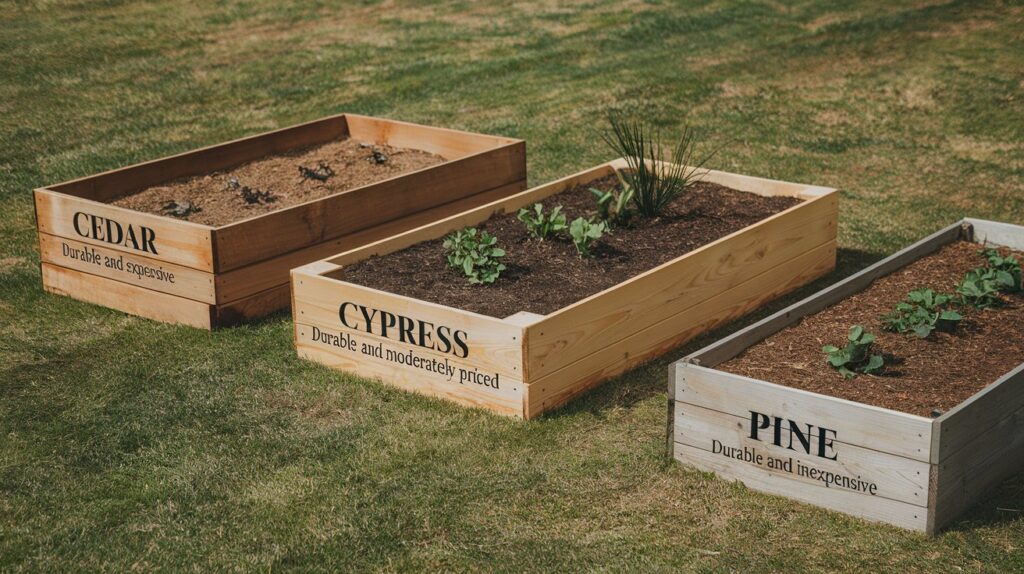
2. Top Wood Options for Raised Garden Beds
Several types of wood are suitable for raised garden beds, each with its advantages and disadvantages. Let’s take a closer look at the most common options:
Cedar: The Top Choice for Durability
- Why Cedar?: Cedar is by far one of the best woods for raised beds. It is naturally rot-resistant, meaning it can last for 10-15 years without breaking down. Cedar also repels insects, making it less likely to be damaged by termites or other pests.
- Cost: Cedar is on the pricier side, with boards costing anywhere from $2 to $4 per linear foot, depending on where you live. However, its durability makes it a worthwhile investment for long-term projects.
- Environmental Impact: Cedar is an eco-friendly option since it doesn’t need to be chemically treated to resist rot. Plus, its natural oils help preserve it for many seasons.
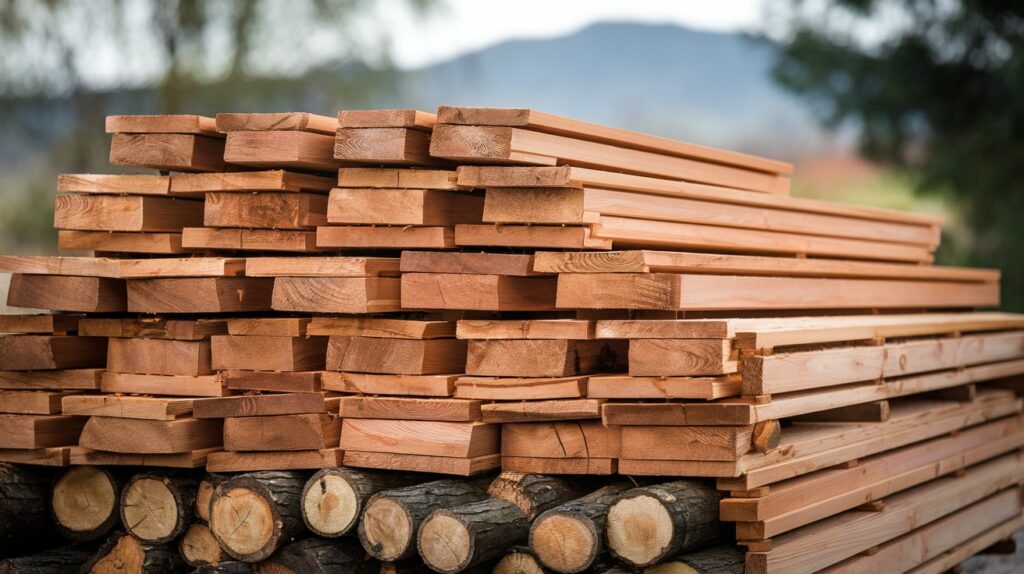
Pine: A Budget-Friendly Option
- Why Pine?: Pine is an affordable option that’s easy to find at most hardware stores. Untreated pine is less expensive than cedar and provides a good base for budget-conscious gardeners.
- Durability: While it doesn’t last as long as cedar (typically 5-7 years), untreated pine is still a solid choice, especially if you’re building on a budget or don’t mind replacing the bed every few years.
- Safety: Make sure to use untreated pine, as treated pine often contains chemicals that can leach into the soil and affect your plants.
Douglas Fir: An Affordable Middle Ground
- Why Douglas Fir?: Douglas fir is another popular choice for raised garden beds because it’s more affordable than cedar but still offers a good degree of rot resistance. Fir is widely available and can last between 7-10 years when untreated.
- Cost: Fir costs slightly more than pine but less than cedar, making it a solid mid-range option for gardeners looking for a balance between cost and longevity.
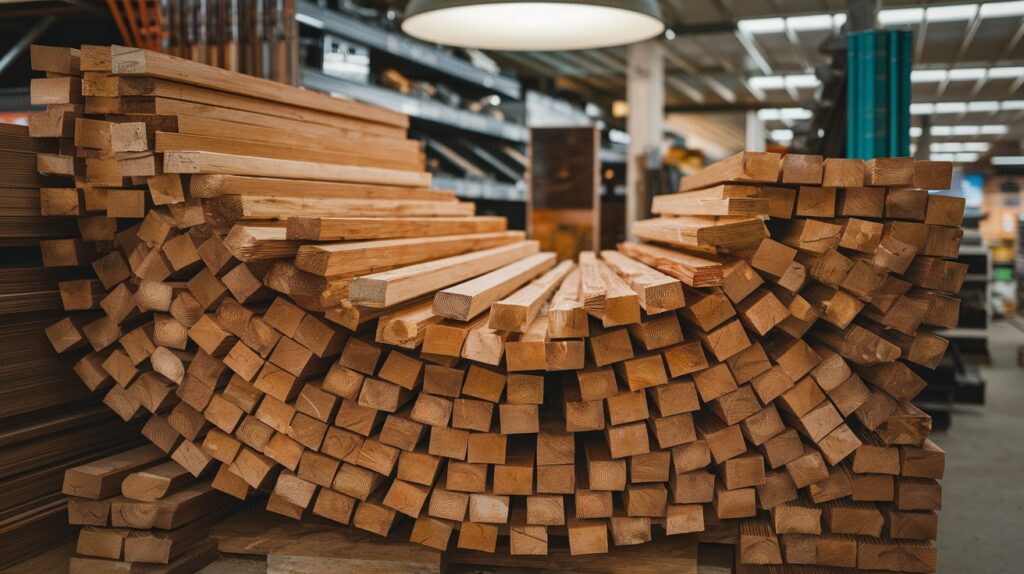
Redwood: Premium Performance with a Price Tag
- Why Redwood?: Like cedar, redwood is naturally resistant to rot and insects. Its durability is similar to cedar, and it adds a beautiful, rich color to garden beds.
- Cost: Redwood tends to be more expensive than cedar, often ranging between $4 to $6 per linear foot. If aesthetics and durability are your top priorities, redwood is an excellent choice, though it comes at a premium.
3. Pressure-Treated Lumber: Is It Safe?
In the past, many gardeners avoided using pressure-treated wood for raised beds due to concerns over the chemicals (such as arsenic) that were used to treat it. However, modern pressure-treated lumber is treated with copper-based preservatives, which are generally considered safe for vegetable gardening.
Pros:
- Cost-Effective: Pressure-treated wood is typically more affordable than cedar or redwood and can last 10-15 years.
- Durability: It offers excellent rot and insect resistance due to the chemical treatment.
Cons:
Chemical Leaching: Even though modern pressure-treated wood is safer, some gardeners prefer to avoid it altogether for food gardens, especially if growing organically. If you do use it, consider lining the inside of the bed with landscape fabric to create a barrier between the soil and the wood.
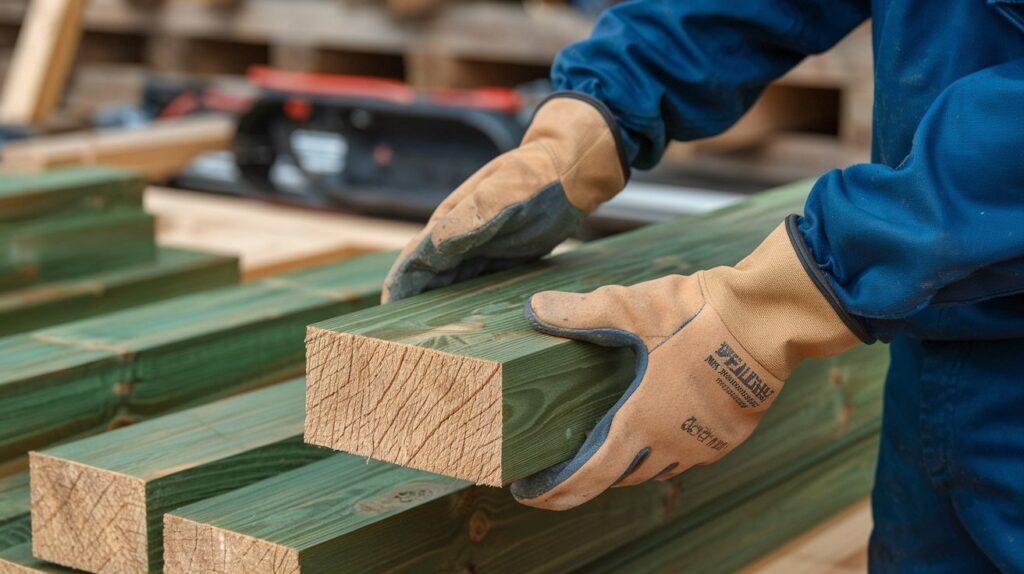
4. Alternative Wood Sources: Reclaimed Wood
Using reclaimed wood is an eco-friendly and budget-conscious option. Reclaimed lumber, sourced from old buildings, fences, or pallets, can often be found for free or at a low cost. However, there are a few things to keep in mind when using reclaimed wood:
- Check for Chemicals: Make sure the wood hasn’t been treated with harmful chemicals like creosote or arsenic, which were used in older pressure-treated wood.
- Inspect for Rot: Ensure the wood is still in good condition and free from rot or pest damage.
- Sanding and Finishing: Reclaimed wood may require some extra prep, like sanding and trimming, before it’s ready to use.
5. Maintenance Tips for Long-Lasting Raised Beds
Regardless of the type of wood you choose, there are a few maintenance tips to help extend the life of your raised garden bed:
- Use Liners: Line the inside of the bed with landscape fabric to prevent soil from coming into direct contact with the wood. This helps reduce moisture exposure and slows down the rotting process.
- Avoid Overwatering: Excess water can cause wood to degrade faster. Ensure your raised bed has proper drainage and avoid over-saturating the soil.
- Seal the Wood: If you want to increase the lifespan of your raised bed, consider using a non-toxic wood sealer. This can help repel water and protect the wood from moisture and UV damage. However, ensure the sealant is food-safe, especially if you’re growing vegetables.
6. Conclusion: Choosing the Best Wood for Your Garden
When it comes to choosing the best wood for your raised garden bed, the key is to balance durability, cost, and environmental impact. For gardeners looking for long-lasting, insect-resistant wood, cedar or redwood is the best option, though they come at a higher price. For a budget-friendly solution, pine and Douglas fir are great choices that provide good durability at a more affordable cost. If you’re concerned about chemicals, stick with untreated wood or use liners to create a barrier between the soil and the wood.
By selecting the right wood, you can ensure your raised garden bed will provide years of productive gardening, giving you a beautiful and bountiful harvest season after season.
